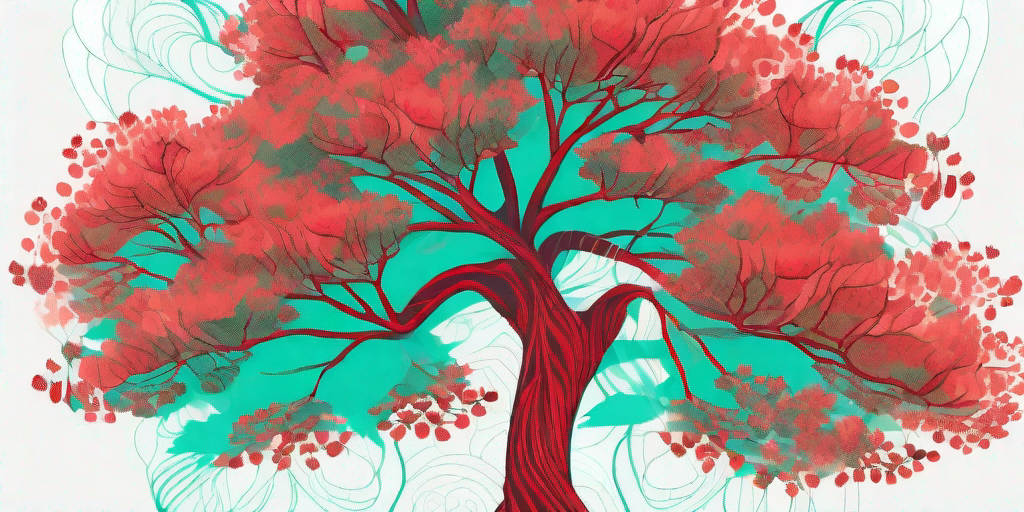
Spring is a season of rebirth and renewal, a time when nature dons its most vibrant colors and the world is filled with a sense of anticipation and excitement. One of the most striking symbols of this season is the Red Horse Chestnut tree, a majestic specimen that is as beautiful as it is intriguing. But what exactly makes this tree so special? Let's embark on a journey to discover the vibrant beauty of Red Horse Chestnut trees.
The Unmistakable Charm of Red Horse Chestnut Trees
Red Horse Chestnut trees, scientifically known as Aesculus x carnea, are a hybrid species that are a cross between the common Horse Chestnut and the Red Buckeye. This unique blend results in a tree that is truly a sight to behold, especially during the spring season when it's in full bloom.
The tree is characterized by its large, palmate leaves that are a deep green color. But the real showstopper is the tree's flowers. They are a vibrant red color, hence the name, and they grow in large, cone-shaped clusters that can reach up to 10 inches in length. These stunning flowers not only add a pop of color to any landscape, but they also attract a variety of wildlife, including bees and hummingbirds.
How to Grow and Care for Red Horse Chestnut Trees
Choosing the Right Location
Red Horse Chestnut trees are not overly picky when it comes to their location, but they do have a few preferences. They thrive in areas that receive full sun to partial shade, and they prefer well-drained soil. If you're planting one in your backyard, make sure it's in a spot where it has plenty of room to grow, as these trees can reach heights of up to 35 feet.
Watering and Fertilizing
When it comes to watering, Red Horse Chestnut trees prefer a 'Goldilocks' situation - not too much, not too little, but just right. During the growing season, it's best to water them deeply once a week. As for fertilizing, a slow-release, granular fertilizer applied in the spring should do the trick.
Pruning and Maintenance
Pruning is an essential part of maintaining the health and beauty of your Red Horse Chestnut tree. It's best to prune in the late winter or early spring, before the new growth begins. Remove any dead or diseased branches, and trim back any branches that are growing too close to the trunk.
The Role of Red Horse Chestnut Trees in the Ecosystem
Red Horse Chestnut trees are not just beautiful to look at, they also play a crucial role in the ecosystem. Their flowers provide a valuable source of nectar for bees and other pollinators, while their large, dense canopy provides shelter for a variety of birds and small mammals.
Furthermore, the seeds of the Red Horse Chestnut tree, also known as conkers, are a favorite food of squirrels and other rodents. So, by planting a Red Horse Chestnut tree in your backyard, you're not just adding a beautiful feature to your landscape, you're also contributing to the health and diversity of your local ecosystem.
FAQs about Red Horse Chestnut Trees
- Are Red Horse Chestnut trees fast-growing?
Compared to other trees, Red Horse Chestnut trees have a moderate growth rate. They typically grow about 1 to 2 feet per year.
- Are Red Horse Chestnut trees evergreen?
No, Red Horse Chestnut trees are deciduous, meaning they lose their leaves in the fall and regrow them in the spring.
- Can Red Horse Chestnut trees be grown in pots?
Due to their large size, Red Horse Chestnut trees are not suitable for pot cultivation. They are best grown in the ground where they have plenty of room to spread their roots.
Conclusion
Red Horse Chestnut trees are a true spectacle of nature, a testament to the beauty and diversity of our planet. Whether you're a seasoned gardener or a novice, these trees are a fantastic addition to any landscape. So why not ride into spring with the vibrant beauty of a Red Horse Chestnut tree? You won't regret it!
And remember, as the old saying goes, "The best time to plant a tree was 20 years ago. The second best time is now." So don't wait, start planning your Red Horse Chestnut tree planting today!















